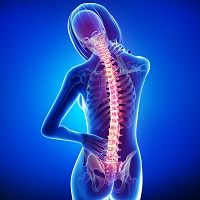Article
Women With Spondyloarthritis Face Increased Risk of Uveitis, Other Conditions
Author(s):
A new study out of Ireland examined the prevalence of extra-articular manifestations in axial spondyloarthritis, and found that women were at significantly higher risk for inflammatory bowel disease and uveitis than men.

Speaking at a press conference at the 2016 American College of Rheumatology/Association of Rheumatology Health Professionals Annual Meeting in Washington, DC, Gillian Fitzgerald, MD, presented a litany of findings on the prevalence of extra-articular manifestations of axial spondyloarthritis (axSpA). Fitzgerald, a Rheumatology Specialist at St. James’s Hospital in Dublin, Ireland, stressed the importance of understanding the connotations of these extra-articular manifestations, given the increased burden they create on the healthcare system and patient alike.
The team, she says, wanted to construct a study with a well-designed disease criteria, and that honed in particularly on the role of gender and disease duration in the development of additional symptoms. The 3 major articular manifestations that the study focused on were uveitis, psoriasis, and inflammatory bowel disease (IBD).
Previously, the researchers claim, AXSPA had primarily been seen as a condition that men experienced, but increasingly the field has begun to identify its prevalence among women as well. Using the Ankylosing Spondylitis Registry of Ireland (ASRI), established in 2013, the study identified 564 patients for its pool. 78.2% were male, with a mean age of 47 years old and a mean disease duration of almost 21 years, including an average delay to diagnosis of 8.6 years.
Over 50% of the patients in the study were found to have one or more of the three articular manifestations in question. Eight percent had two of the manifestations, and 1% had all three.
Uveitis was the most common, in 35% of all patients, followed by psoriasis at 17%, and IBD at 9%. Uveitis and psoriasis were the most common combination among those who suffered from both.
When isolated by gender, disparities emerge. 47% of the women in the study had uveitis, compared to only 32% of men. IBD was also significantly more present in the female AXSPA patients than the men at 17% as opposed to 8%. Incidence of psoriasis were about equal.
Overall, females were 1.7 times more likely to experience some form of extra-articular manifestation of AXSPA than men were. They found that disease duration only played a noticeably role in one of the manifestations, as those in late disease stage were 2.4 times more likely to experience uveitis than those in early disease.
To conclude her press conference, Fitzgerald noted that “gender appeared to have a significant effect on the risk of extra-articular manifestations,” and emphasized that, although more research is needed to underscore them, “these findings are of importance to rheumatologists looking who are looking after axial SpA patients, because ultimately they can lead to better care.”
Related Coverage:
Anti-TNF Treatments for Ankylosing Spondylitis Decrease Need for Hip Replacement
Characteristics of Ankylosing Spondylitis
Study Bolsters Link Between Psoriatic Arthritis and Fibromyalgia

























